Water-Based Ink Solutions for LED Digital Tubes & Global Market Potential
[Summary] This article highlights the TS-1050S water-based ink's application and advantages in LED digital tube printing. Customers seek eco-friendly, acetone-resistant, odorless, stable post-screen printing, and easy-to-clean inks. TS-1050S offers excellent adhesion, particularly on porcelain-white PPE, with acetone resistance, low VOC & ROHS compliances. It also has a long working time, quick drying, and strong film properties. By 2027, the global LED market is expected to reach $145 billion, driving demand for eco-friendly inks.

TS-1050S Water-based Ink —— LED Digital Tubes Ink Solutions
As LED digital tubes are widely applied across various industries, particularly in electronics and home appliances, customer demands for print quality have risen. To meet these needs, the performance, safety, and environmental friendliness of printing inks are gaining significant attention. Specific requirements were raised for the printing of porcelain-white PPE digital tubes, leading us to provide TS-1050S water-based ink as a solution.
I. Customer Demand Analysis
Customers have specified the following requirements for the printing ink for LED digital tubes:
Water-Based Ink: An environmentally friendly water-based ink to reduce volatile organic compound (VOC) emissions.
400 Mesh Screen Printing: Ensuring fine printing results.
Acetone Resistance: The ink must have outstanding resistance to acetone wiping to ensure the printed content remains intact during cleaning, preserving the clarity and integrity of markings.
No Irritating Odor: The ink should not emit any irritating odors after printing, ensuring a safe and comfortable working environment.
Color Consistency: The printed color must match existing products to avoid shiny surfaces or other undesirable visual effects.
Stability After Screen Printing: The printed surface should possess ink adhesion resistance during subsequent processing to ensure long-term print quality stability.
Ease of Cleaning: The ink must allow for easy cleaning of the screen with acetone, facilitating operation and maintenance.
II. Overview of TS-1050S Water-Based Ink
The TS-1050S water-based ink provided by our ink engineering department effectively addresses multiple technical demands from customers regarding LED digital tube printing. This ink is suitable for various materials, including PS, HIPS, PC, PMMA, ABS, PVC, and glass, with particularly good compatibility with porcelain-white PPE.

1. Characteristics of TS-1050S Water-Based Ink:
Excellent Adhesion: Exhibits outstanding adhesion to multiple plastic materials, especially demonstrating good compatibility with PPE, ensuring the stability and durability of printed patterns.
Acetone Resistance: Provides high resistance to acetone wiping, ensuring no ink removal during cleaning and extending the product's lifespan.
Eco-Friendly & Low VOC: Features low volatile organic compounds, meeting modern environmental requirements, enhancing safety and comfort in the operating environment.
Quick Drying & Ease of Application: The ink dries quickly with a long working time; when combined with TS-1050-01 curing agent, the application time can be extended to 6 hours for convenience.
Excellent Film Performance: After curing, the film exhibits good hardness, flexibility, and impact resistance, with superior wear resistance.
ROHS Compliance: Ensures that the ink meets international environmental standards, further increasing its market competitiveness.
2. Main Technical Indicators:
Appearance: Light yellow transparent liquid
Viscosity: 10,000-15,000 PCS (25°C)
Active Ingredient: 35% ±2
Drying Conditions: Bake at 130°C for 30 minutes
VOC Value: 8 ± 0.5
Curing Agent Addition Ratio: 10%-20%
3. Safety Rules:
1) This product is industrial-grade; avoid direct skin contact, eye contact, and inhalation.
2) Use this product in conditions with forced ventilation.
3) If accidentally splashed in mouth, nose, eyes, or ears, rinse with plenty of water or seek medical assistance.
4) Those allergic to this product should apply a layer of skin lotion or wear impermeable gloves before use.
4. Storage, Transportation, and Packaging:
1) Store in a room with temperatures between 15-30°C, avoiding direct sunlight.
2) Prevent freezing and exposure during transportation and storage, while avoiding extremely low or high temperatures.
3) Packaging is in plastic barrels: 1KG or 4KG cans.
III. Application Cases and Market Outlook
TS-1050S water-based ink has been successfully applied in several LED digital tube manufacturing companies, receiving positive customer feedback. In the future, with increasing environmental awareness, the demand for low VOC eco-friendly inks will continue to grow.
IV. LED Digital Tube Market Potential Analysis
1. Global LED Market Growth
According to a report by MarketsandMarkets, the global LED market was valued at around $77 billion in 2022 and is projected to reach $145 billion by 2027, reflecting a compound annual growth rate (CAGR) of 13.4%., LED digital tubes, as an important component of display devices, benefit from applications in smart homes, electronic devices, intelligent transportation, and public displays, making their market prospects increasingly broad.

LED digital tubes are widely used in consumer electronics, traffic displays, industrial equipment displays, home appliances, advertising screens, etc., with their low energy consumption, long lifespan, and easy maintenance characteristics particularly aligning with sustainable market demands.
2. Key Application Areas for LED Digital Tubes
1) Home Appliance Displays: LED digital tubes are frequently utilized in the panel display systems of household appliances, including washing machines, refrigerators, and air conditioners. Statista reports that the global home appliance market was valued at $560 billion in 2022 and is projected to grow to $745 billion by 2027, driven by increasing demand for LED digital tubes in display applications.
2) Automotive Industry: LED digital tubes play an important role in display systems in automobiles, including dashboards, navigation devices, and taillights. MarketsandMarkets forecasts that the global automotive LED market will expand from $3.6 billion in 2022 to $5.7 billion, achieving a compound annual growth rate of 9.3%. This market growth provides significant development potential for LED digital tubes.
3) Consumer Electronics: With the rapid development of the Internet of Things (IoT), the demand for smart devices has surged, positioning LED digital tubes as commonly used components for device displays. Gartner predicts that the number of smart devices worldwide will reach 75 billion by 2025, driving a surge in the demand for LED display components.
3. Regional Market Analysis
1)Asia-Pacific: The Asia-Pacific region is the largest consumer market for LED digital tubes, particularly in China. According to LED inside, in 2022, China's LED market accounted for 45% of the global market, expected to increase to over 50% by 2025. Government-promoted "energy-saving and emission-reduction" policies, along with the development of smart transportation, smart homes, and smart cities, provide strong support for the expansion of the LED digital tube market.
2) North America and Europe: North America and Europe also show strong demand for LED digital tubes. According to Technavio's market analysis, the North American market was approximately $12 billion in 2021, projected to reach $20 billion by 2026, with a compound annual growth rate of 9.1%. The European market is also rapidly expanding in the automotive manufacturing and public transportation sectors due to the promotion of intelligent transportation and green energy.
4. Technological Innovations and Future Development Trends
1) Higher Brightness and Energy Efficiency: With the advancement of LED technology, the brightness, energy efficiency, and lifespan of LED digital tubes are expected to significantly improve. The application of new technologies like Mini LED and Micro LED will further drive the proliferation of LED digital tubes in high-end display markets.
2) Intelligent and Multi-functional: LED digital tubes will increasingly be integrated into IoT devices, enabling smart control and interactive features. For instance, in smart home settings, LED digital tubes will not only display information but can also connect with smart control systems to provide real-time feedback and controls.
3) Upgrading Environmental and Energy-Saving Standards: Global demands for energy-saving and environmental protection are becoming increasingly stringent. According to the United Nations Environment Programme, 30% of global energy consumption comes from the lighting sector, and promoting LED technology can significantly reduce this proportion. LED digital tubes, with their energy-saving characteristics, meet environmental standards, leading to broader applications in public lighting, transportation systems, and more.
5. Market Competition and Challenges
Despite the vast prospects for the LED digital tube market, it faces some challenges. Firstly, the market is highly competitive with a lot of manufacturers. Secondly, although costs have declined, the manufacturing cost of high-end LED digital tube products remains relatively high, which may impact their promotion in certain application areas. Lastly, technological barriers restrict entry for some emerging enterprises into this market.
However, with ongoing technological maturity and advantages in large-scale production, the production costs of LED digital tubes are expected to decrease further, expanding the market application scope.
6. Conclusion and Market Outlook
Through the above data analysis, the LED digital tube market holds enormous potential. The global push for energy-saving and environmentally friendly technologies, the proliferation of smart devices, and the development of emerging display technologies all provide strong support for the market expansion of LED digital tubes. With the maturation of regional markets and continuous technological innovation, demand for LED.

